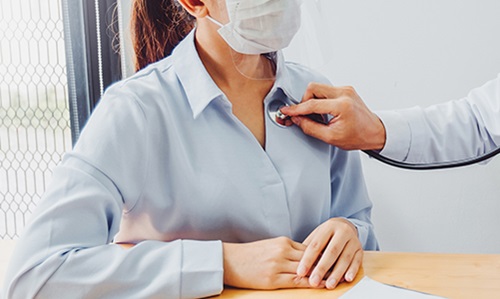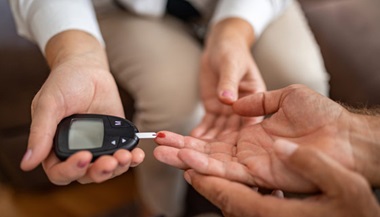Hypertension: What You Need to Know as You Age
Reviewed By:
You can’t see high blood pressure, also called hypertension. And most of the time, you can’t feel it. But if you’re among the 78 million Americans with hypertension or are one of the 70 million with prehypertension (higher-than-healthy blood pressure levels), it’s important to understand its effects on your health—and to take action today to bring your numbers down to healthier levels.
Blood pressure is the force of blood against the inner walls of your arteries. It has normal fluctuations throughout the day—falling when you’re relaxed or asleep, rising naturally in the morning, and increasing temporarily when you’re under stress, excited or exercising. But when your resting blood pressure level rises too high, it can scar, stiffen and/or weaken blood vessels. This effect can double your risk for a heart attack ; quadruple your odds for a stroke ; raise your risk for heart failure , vision loss, kidney problems, dementia and circulation problems such as peripheral artery disease (which causes pain in your legs); weaken your bones ; and contribute to erectile dysfunction in men.

Causes and Risk Factors
You may be at an increased risk for high blood pressure if you smoke, are overweight, eat a diet that’s low on produce and fiber and/or high in fat and salt, drink alcohol to excess, live with chronic stress or don’t get much physical activity. Some causes of hypertension cannot be controlled—including your genes and your race (African-Americans are at a higher risk). Aging also plays a role. Even if you do not have hypertension by age 55 to 65, your lifetime risk for developing it is a whopping 90 percent.
“But doctors no longer consider hypertension inevitable or untreatable with age,” says Samuel Durso, M.D., director of the Division of Geriatric Medicine and Gerontology at Johns Hopkins.
In one Johns Hopkins study of 975 older women and men with hypertension, healthy lifestyle steps helped 40 percent stop taking blood pressure medications. Other research has shown that lifestyle changes can lower the risk for hypertension in African-Americans and others at an increased genetic risk.
Prevention
A healthy lifestyle is a strong shield against high blood pressure and its damaging effects. These steps can lower your risk—and also help lower your numbers if you already have prehypertension or hypertension.
Lose a little weight. Excess weight—and especially excess fat stored in your abdomen—can raise blood pressure by increasing your blood volume and by changing the balance of pressure-regulating hormones. “Even modest weight loss can make a world of difference,” Durso notes, pointing to research that shows that losing just 7.7 pounds could reduce your risk for high blood pressure by 50 percent or more.
Cut back on alcohol. “Moderating alcohol is very important,” Durso says. “If you are a man who has more than two drinks a day or a woman who has more than one drink a day, cut back.” While a little alcohol may relax arteries, too much seems to have the opposite effect.
Move more. Exercise and other kinds of physical activity help keep arteries flexible and also reduce activity in the sympathetic nervous system , which can tighten blood vessels and boost blood pressure. If you already have high blood pressure, regular exercise alone could lower your numbers by 8 to 10 points, according to the American Heart Association.
Feed healthy blood pressure. The minerals calcium, magnesium and potassium (found in low-fat and fat-free dairy products, such as milk and yogurt, as well as in produce and dried beans) help your body regulate blood pressure. Too little can raise your blood pressure. So can high amounts of sodium—found in many processed foods—by making your body retain water (which boosts blood volume) and even tightening small blood vessels. Saturated fat (found in meat, cheese, butter, full-fat dairy products and many processed foods) may also raise blood pressure.
Quit smoking. Smoking damages arteries and raises the risk of heart disease. While you’re having a cigarette, the chemicals in tobacco products elevate blood pressure too.
Soothe stress. It’s not clear whether mind-body therapies have a lasting effect on blood pressure or reduce the risk, but it is known that the body’s stress response releases hormones that temporarily raise blood pressure. You’ll feel better, and find it easier to make other healthy changes, if you regularly practice a stress-soothing technique such as breathing exercises, progressive relaxation and fitness activities. One technique, meditation, has been shown to reduce the risk for heart attacks and strokes in people with high blood pressure.
Diagnosis & Treatment
To bring your high blood pressure down to a healthy level, your doctor will likely recommend healthy lifestyle changes, medication or both. “The decision to begin blood pressure medication—and the amount and type your doctor prescribes—will depend on the severity of your high blood pressure,” Durso explains. “If you have prehypertension or if your blood pressure is mildly elevated, lifestyle changes alone may be the first step. Losing 5 percent to 10 percent of your body weight, reducing sodium, improving your diet and exercising regularly will usually result in a lowering of your blood pressure. If your blood pressure is higher, your doctor will still recommend these changes along with blood pressure medications.”
There are six major types of blood pressure medications:
- Diuretics work by helping the body eliminate extra water and sodium.
- Beta blockers reduce your heart rate and output of blood, which lowers blood pressure.
- Vasodilators, angiotensin-converting enzyme (ACE) inhibitors, angiotensin II receptor blockers (ARBs) and calcium-channel blockers all work by relaxing constricted blood vessels.
“Your doctor will choose the medications that are right for you,” Durso says. “Often, doctors prescribe more than one medication to control blood pressure. You may need medications that work on several different mechanisms to bring your blood pressure down. Or your doctor may be able to give you lower medication doses, and reduce the chances for side effects, by combining two or three medications.”
Two important things to know about your treatment:
Your doctor may increase your dose gradually. “It may take a month to six weeks to bring your blood pressure down by slowly raising your medication doses,” Durso notes. “Lowering blood pressure too quickly can cause dizziness and increase the risk for falls.”
Report side effects. “Don’t stop medications on your own,” warns Durso. “Call or make an appointment to tell your doctor about side effects you may be having. He or she may be able to make adjustments or switch your medication.” Side effects can include tiredness, cold hands or feet, impotence, depression, sleep problems, heartbeat changes and a dry cough.
Learn more about the symptoms, diagnosis and treatment of hypertension in the Health Library.
Living With
High blood pressure often has no symptoms. That can make staying on track with healthy lifestyle changes and medication challenging—you may not feel the difference. These steps can help you stay committed to controlling your blood pressure on a day-to-day basis:
Use a medication reminder system. A daily pill dispenser, electronic pill bottles that beep when it’s time for your next dose, a note on your refrigerator—use whichever reminder system works best for you. About one in two people with hypertension don’t take their drugs as directed, a mistake that can raise your risk for heart disease, stroke and other health problems.
Monitor at home. “You are the most important member of your blood pressure control team. A home blood pressure monitor will help you see if your medications and lifestyle changes are helping, and can help you stay on track,” Durso says. “You can find inexpensive monitors at the pharmacy.”
See your doctor as recommended. “Your doctor may want to see you every three to four months for the first few years after your diagnosis, to be sure your medications and lifestyle changes are working and to make adjustments,” Durso says. “For someone whose high blood pressure is well-managed and who monitors at home, a checkup every six months may be sufficient. If your blood pressure is within a healthy range and you do not need medication, you may only need a recheck every two years.”
Watch for lows and highs. Sometimes blood pressure medications can reduce your blood pressure too much. If you have signs of low blood pressure—dizziness, fainting, blurred vision, nausea—contact your doctor. On the other hand, if your systolic (top) number rises to 180 or higher or if your diastolic (bottom) number rises to 110 or higher, get immediate medical help.
Research
Johns Hopkins experts continue their work in understanding and treating high blood pressure in ways that translate into better health today. Notable research you can access includes these findings:
Link found between taking blood pressure medications and reduced risk of dementia. In a 2013 study of 3,000 older people, published in the journal Neurology, Johns Hopkins researchers found that those taking diuretics, ARBs and/or ACE inhibitors had a 50 percent lower risk for Alzheimer’s disease .
Intensive treatment lowers blood pressure in African-American men. Urban African-American men face a high risk for untreated hypertension—with fatal consequences. In a 5-year-long study of 309 African-American men ages 21 to 54, Johns Hopkins researchers found that medication, home health visits and clinic appointments lowered participants’ blood pressure significantly.
For Caregivers
If you are the partner or caregiver of someone with high blood pressure, here’s how you can help.
Ask how you can assist with medications. You can provide “time for medication” reminders and help your loved one take prescribed drugs when needed.
Support healthy efforts. Cheerleading a new habit can inspire your loved one to stick with it. But trying to control behavior can backfire. If your loved one isn’t making healthy changes, ask how you can help.
Get healthier together. Spouses who commit to weight loss and exercise together may be more likely to stick with their efforts. Upgrading your habits together can be inspiring, engenders a little healthy competition, and is more convenient too, because you can both eat the same foods and set the same exercise schedule.
Definitions
Dementia (di-men-sha): A loss of brain function that can be caused by a variety of disorders affecting the brain. Symptoms include forgetfulness, impaired thinking and judgment, personality changes, agitation and loss of emotional control. Alzheimer’s disease, Huntington’s disease and inadequate blood flow to the brain can all cause dementia. Most types of dementia are irreversible.
Stay on Top of Your Heart Health








